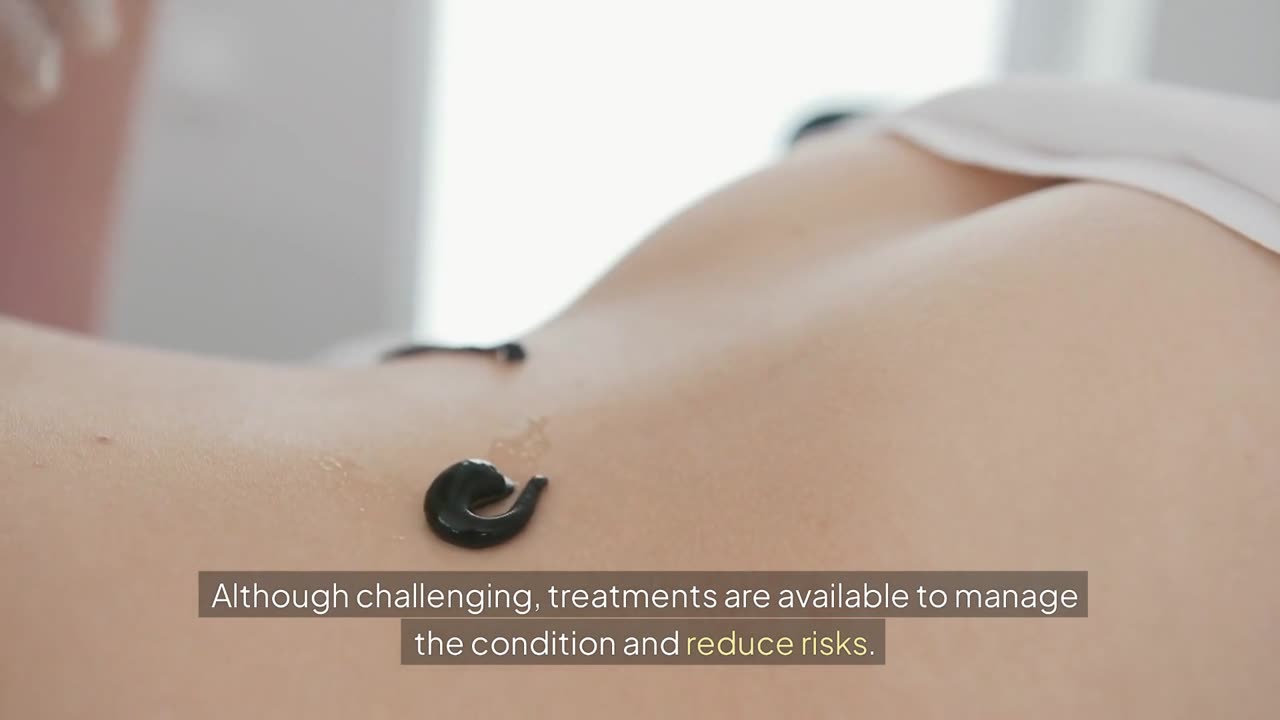Premium Only Content

Paroxysmal Nocturnal Hemoglobinuria (PNH): A Visual and Conceptual Breakdown**
Paroxysmal Nocturnal Hemoglobinuria (PNH) is a rare, life-threatening disease of the blood that primarily affects the red blood cells. To represent this disease visually and conceptually, it’s important to break it down into its core components:
---
#### **1. The Blood Cells – Normal vs. PNH-Affected**
- **Healthy Red Blood Cells (RBCs)**: In a normal person, red blood cells function to carry oxygen throughout the body. These cells have a protective layer of proteins that shield them from being destroyed by the body's immune system.
- **PNH-Affected RBCs**: In PNH, there’s a genetic mutation in the hematopoietic stem cells (which produce blood cells), leading to red blood cells that lack certain protective proteins. This makes them more vulnerable to attack by the body's complement system (part of the immune system that helps clear out pathogens). The absence of these protective proteins causes the cells to break down or "lyse" prematurely.
A visual representation here would show:
- Normal RBCs with intact protein shields, bright red and healthy.
- PNH-affected RBCs lacking these shields, appearing fragile, damaged, or broken.
---
#### **2. Hemolysis – The Breakdown of Red Blood Cells**
- **Intravascular Hemolysis**: In PNH, red blood cells break apart inside blood vessels (intravascular hemolysis). This releases **hemoglobin** (the protein in red blood cells that carries oxygen) into the bloodstream, which can lead to dark-colored urine, especially noticeable in the morning (hence “nocturnal” in the disease name).
The visual might depict:
- Red blood cells bursting inside blood vessels.
- Hemoglobin spilling out into the bloodstream.
- Dark, reddish-brown urine, representing hemoglobin released into the urine.
---
#### **3. Symptoms and Complications**
The representation of PNH can also focus on the variety of symptoms and potential complications, which can include:
- **Fatigue**: Due to anemia from the destruction of red blood cells.
- **Dark Urine**: Often seen in the morning as a result of the broken-down hemoglobin.
- **Blood Clots**: A major cause of death in PNH patients, these can occur in veins or arteries and cause life-threatening complications.
- **Shortness of Breath** and **Chest Pain**: Due to reduced oxygen levels in the blood from the breakdown of red blood cells.
- **Kidney Damage**: From the filtering of hemoglobin in the urine, leading to potential kidney failure.
Visual elements could include:
- A person visibly fatigued or showing symptoms of breathlessness.
- Arteries or veins with blood clots forming.
- Kidneys being damaged due to excess hemoglobin filtration.
---
#### **4. Nocturnal Element: Why “Night” Matters**
The "nocturnal" aspect of the disease relates to the fact that the breakdown of red blood cells tends to happen more at night while the patient is sleeping. This is due to the changes in respiration and blood acidity during sleep.
A visual could show:
- A representation of the night (moon, stars) and an individual waking up in the morning with dark-colored urine due to hemolysis that occurred overnight.
---
#### **5. Treatment and Management**
- **Eculizumab**: This drug is a common treatment for PNH, which works by inhibiting the complement system, preventing it from attacking red blood cells.
- **Bone Marrow Transplant**: In severe cases, this may be a curative option, though it is risky.
Visual representation:
- A medical bottle labeled “Eculizumab” connecting to a patient’s bloodstream.
- A depiction of a healthy bone marrow transplant being received by a patient.
---
### **Conclusion: The Battle Inside the Bloodstream**
In summary, Paroxysmal Nocturnal Hemoglobinuria can be represented as an internal struggle where fragile red blood cells are constantly under attack by the body’s own immune system. The result is ongoing destruction of blood cells, leading to serious complications like anemia, blood clots, and organ damage. Treatment aims to block this internal attack and protect the red blood cells from destruction.
-
 1:10:59
1:10:59
FreshandFit
8 hours agoTop 3 Ways To Overcome A Break Up
86.3K7 -
 6:32:11
6:32:11
Akademiks
9 hours agoDrake Finally CUTS off FAKE FRIENDS in the Industry. VIOLATES KHALED, LEBRON! Announces album Feb14
75.5K11 -
 27:28
27:28
Glenn Greenwald
13 hours agoGlenn Reacts to Trump's Gaza Take Over: System Update Special
181K419 -
 2:13:49
2:13:49
Melonie Mac
9 hours agoGo Boom Live Ep 36!
97.1K9 -
 1:02:11
1:02:11
Sarah Westall
9 hours agoFreezing USAID & its Operations in Ukraine: A Massive Money Laundering Organization? w/ Sam Anthony
87.4K17 -
 2:05:35
2:05:35
Space Ice
13 hours agoSpace Ice & Redeye: Neil Breen's Pass Thru
37K1 -
 1:00:23
1:00:23
The StoneZONE with Roger Stone
9 hours agoRoger Stone Talks Trump’s Electric First 100 Day Agenda | The StoneZone w/ Roger Stone
41.7K9 -
 DVR
DVR
Redacted News
12 hours agoBREAKING! EPSTEIN LIST INCOMING UNDER AG PAM BONDI? DEMOCRATS FREAKING OUT, PRINCE ANDREW NERVOUS
191K302 -
 52:02
52:02
Candace Show Podcast
15 hours agoBecoming Brigitte: An Inaccessible Past | Ep 2
177K266 -
 2:07:26
2:07:26
2 MIKES LIVE
13 hours ago2 MIKES LIVE #176 News Breakdown Wednesday!
33.6K2